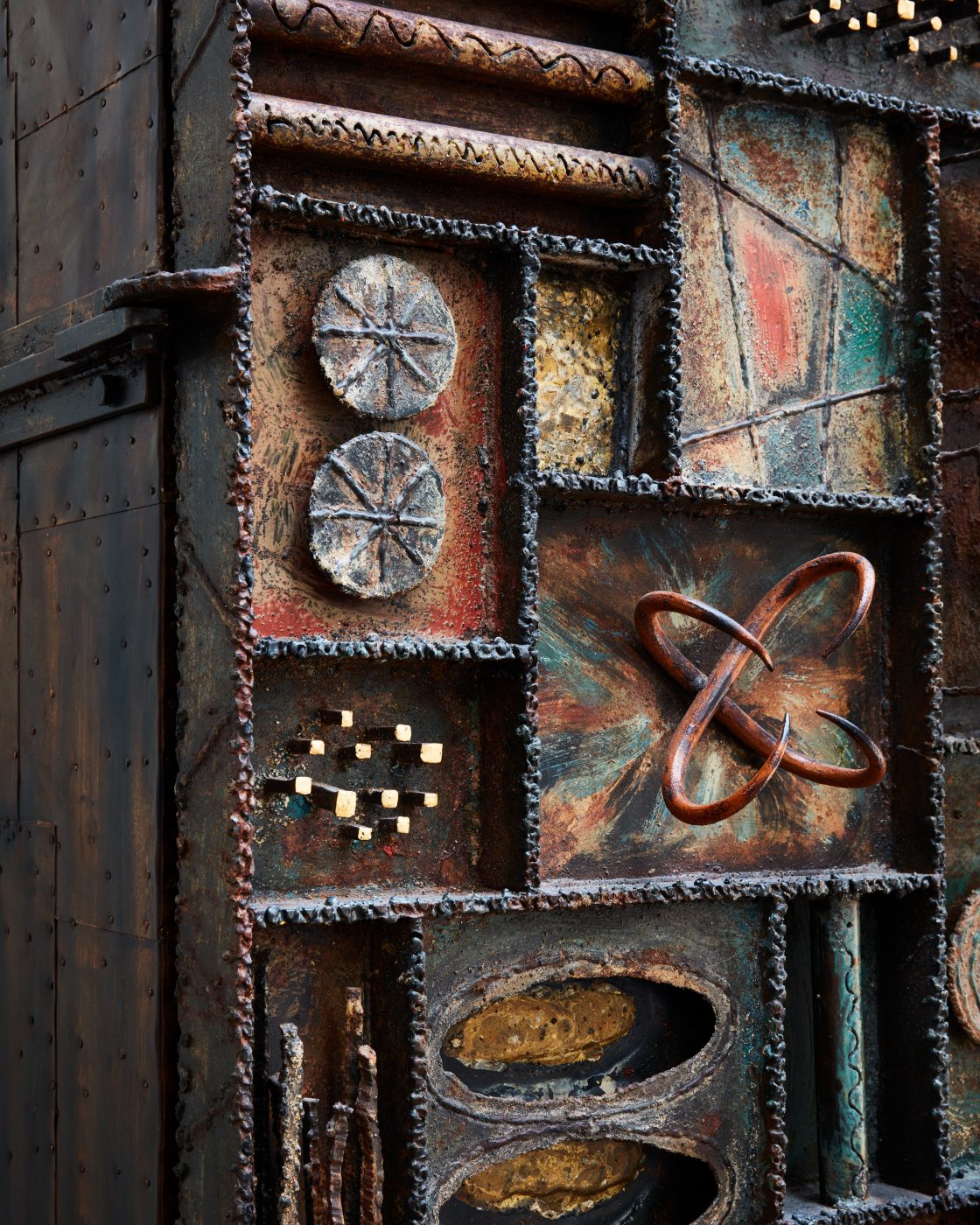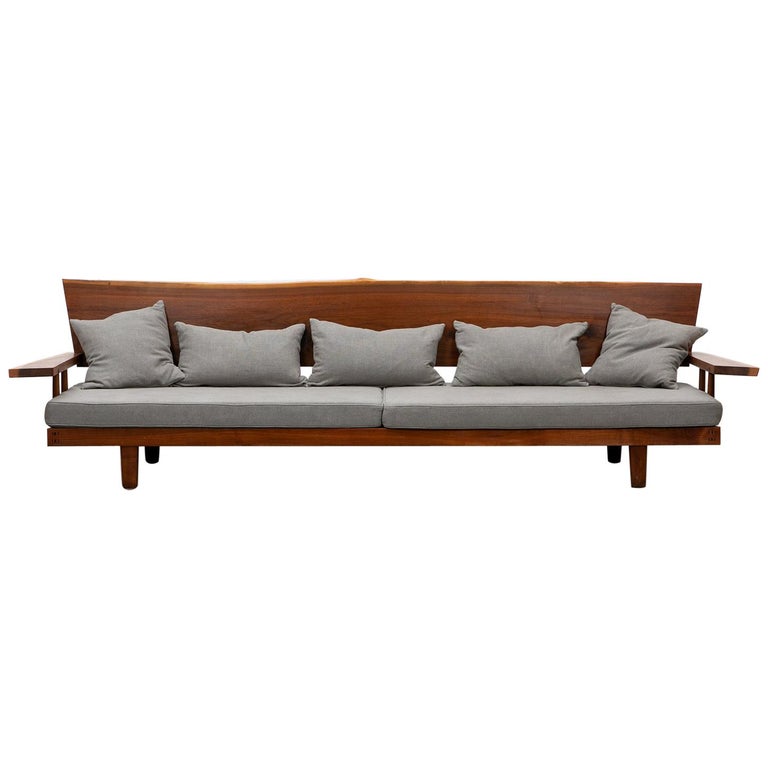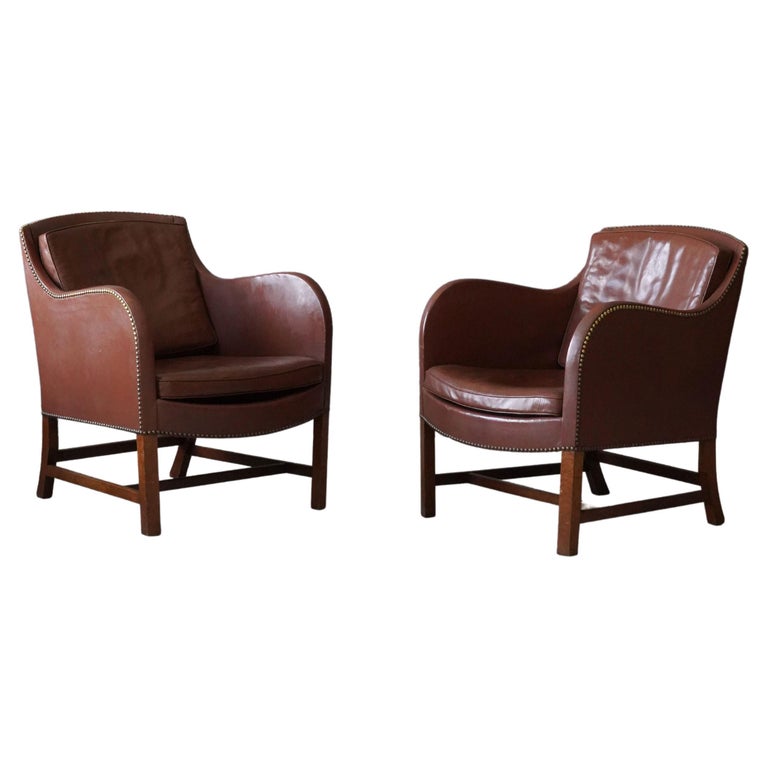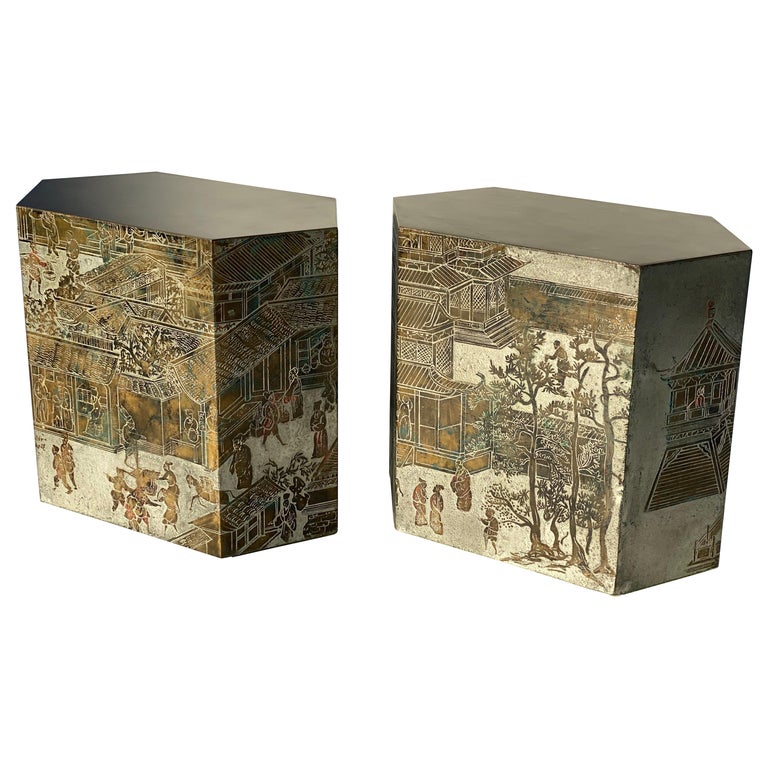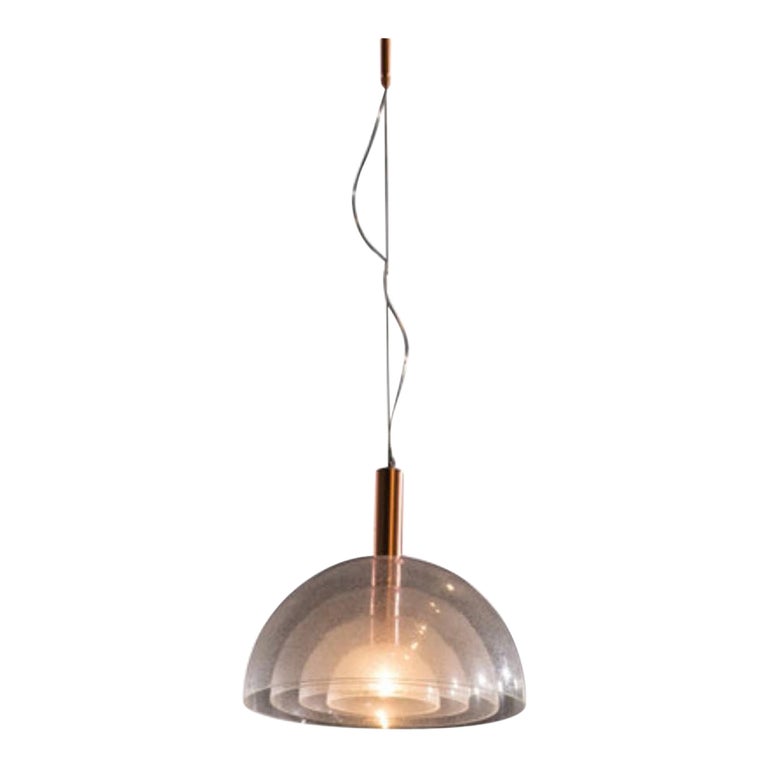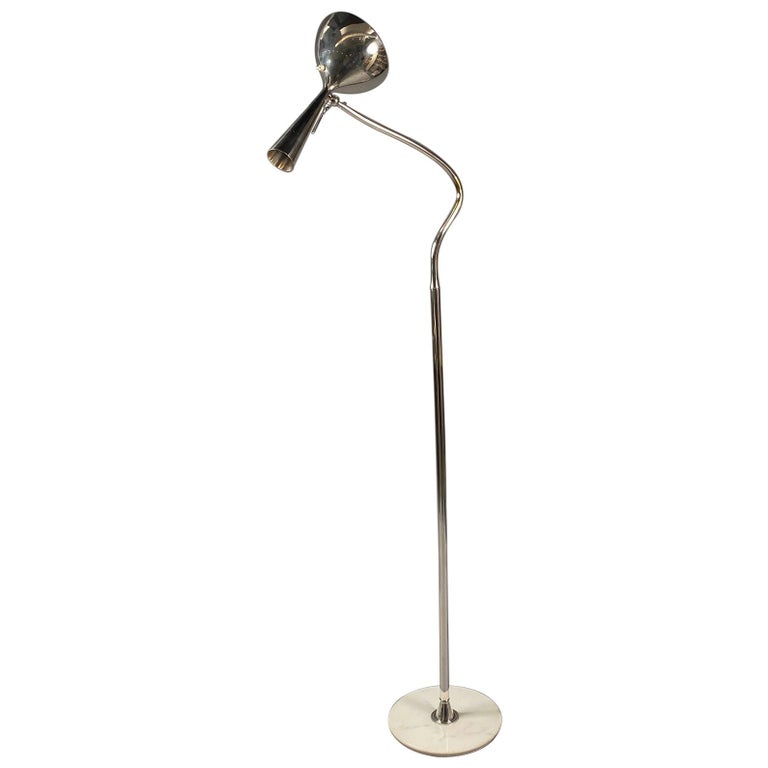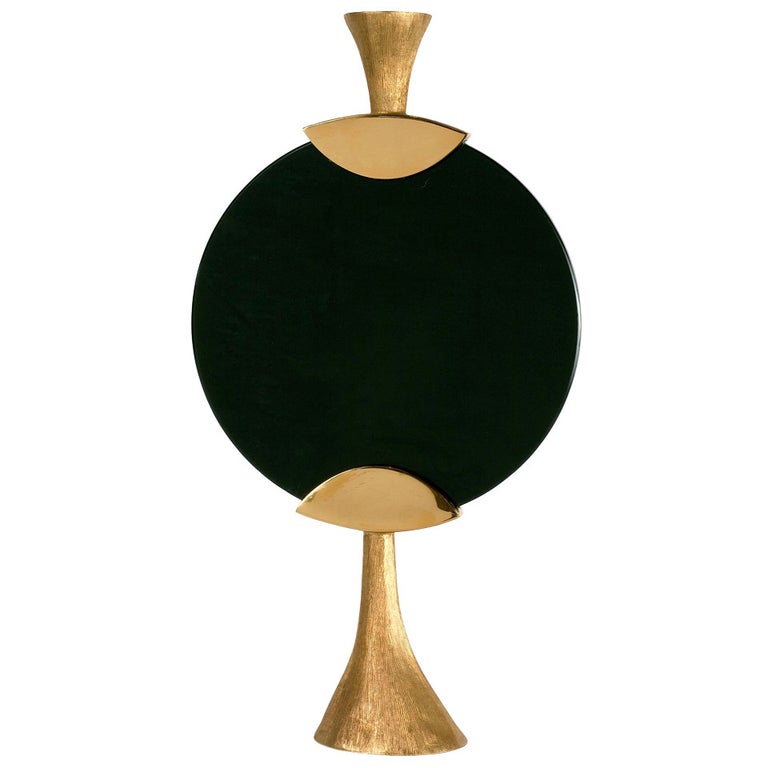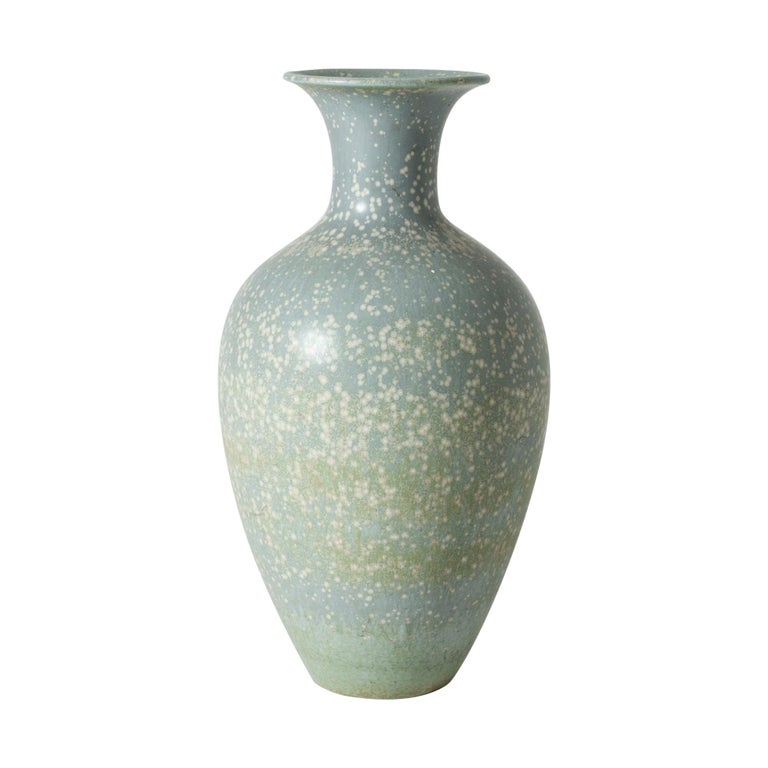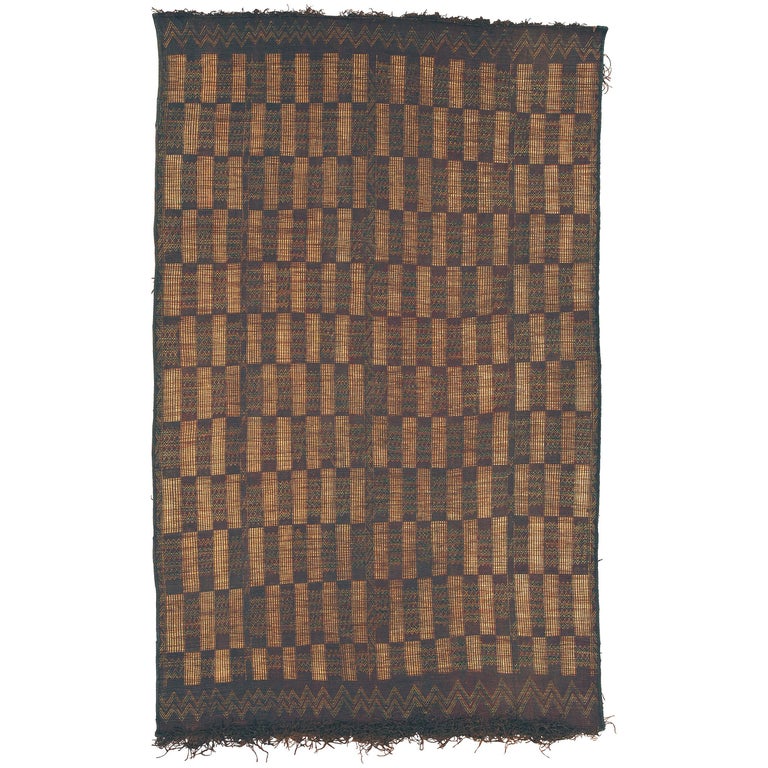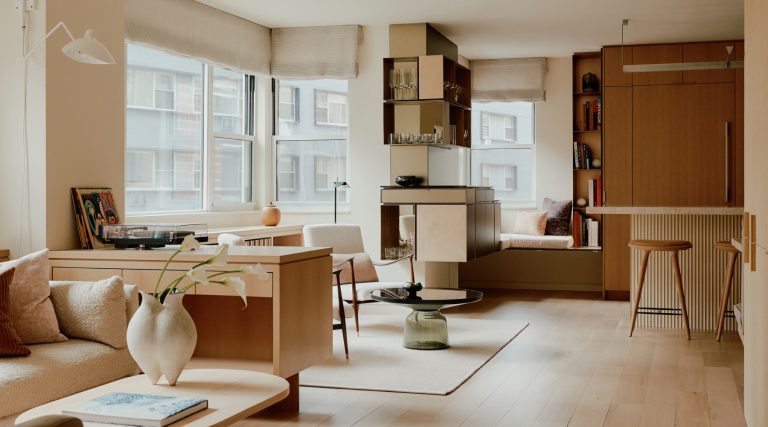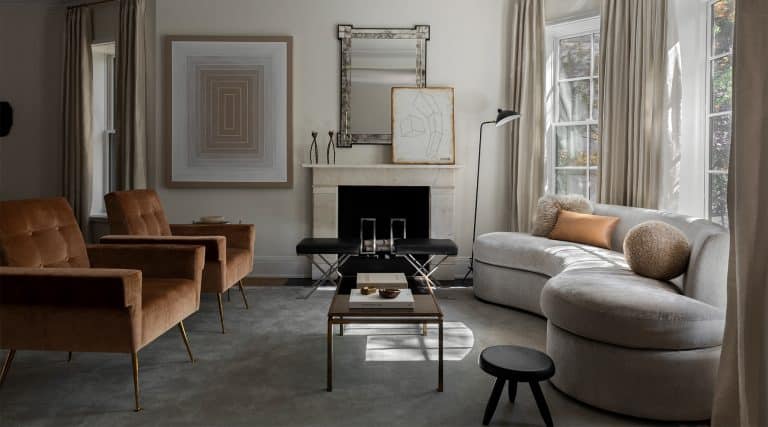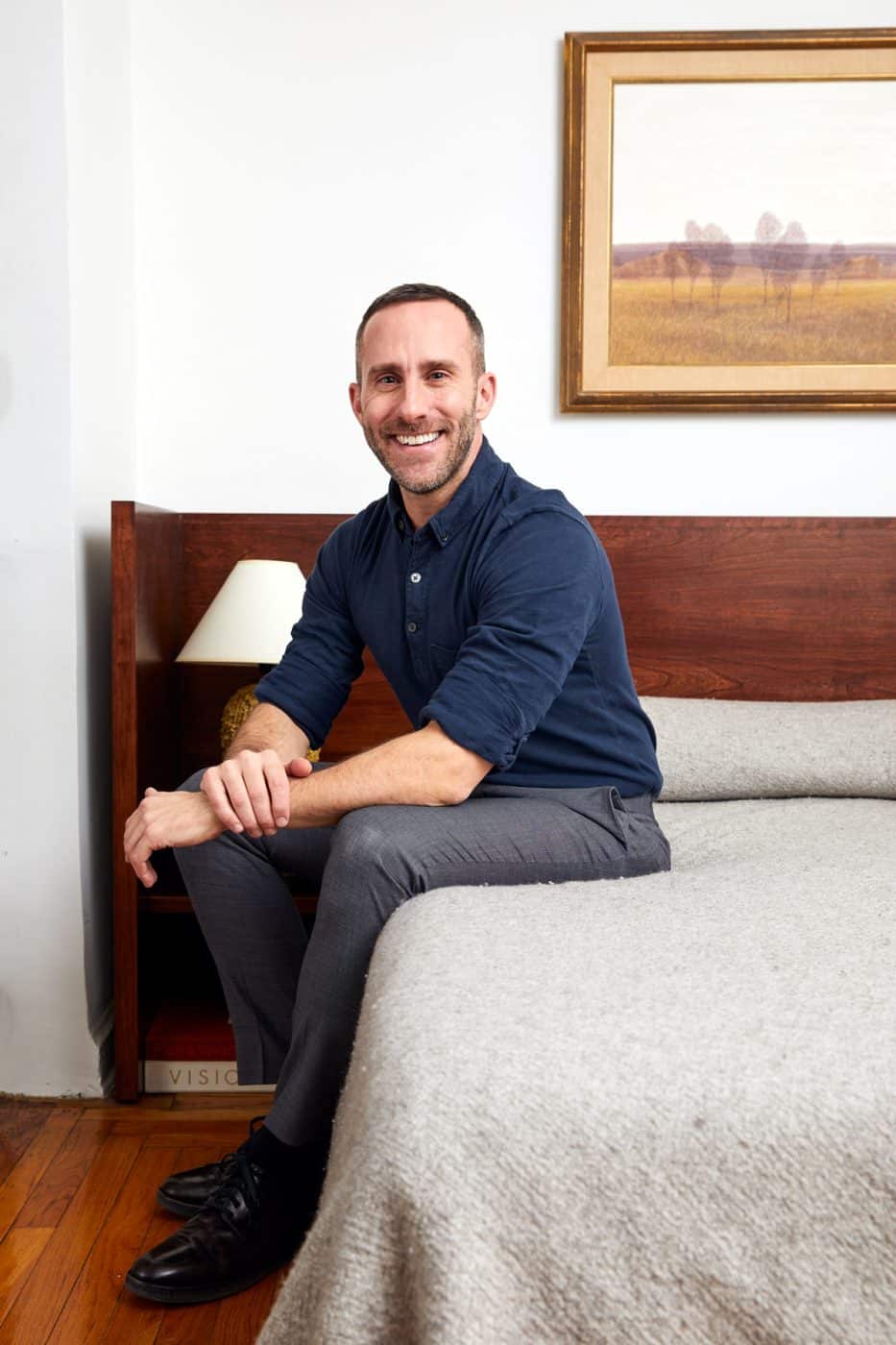
January 23, 2022“The combination of pieces makes me insanely happy,” says the owner of a Gramercy district Manhattan townhouse when asked about the arrangement of furniture in the home’s top-floor lounge. The joy-inducing ensemble includes a whimsical cork-topped cloverleaf coffee table by Paul Frankl (from Objet d’Art Alexandre Ferucci) and equally shapely wooden wingback chairs by Axel Einar Hjorth (from Ponce Berga).
“Taking a cue from the floor’s dramatic, north-facing clerestory, I wanted this space to have a treehouse vibe,” says interior designer Mike Rupp. Below its 24-foot ceiling, he found room for a stainless-steel daisy sculpture by Gloria Kisch (also from Ponce Berga) and a “sculpture front” cabinet by Paul Evans (from the Exchange INT) that dazzles with its forged-steel and brass ornaments.
Like the painting of birch trees from the owners’ collection, Rupp says, “the room is an artistic expression of the outdoors.”
Insanely happy wasn’t always the owner’s reaction to the house. Thirty years ago, when she bought it, “it had been turned into a small apartment building with a dentist’s office on the ground floor.” Together with her husband, she spent more than a year renovating the 1843 building before moving in, and she has continued making changes ever since.
It hasn’t been stress-free. Due to various “fallings out,” she admits, “we have been through a lot of architects.”
But her relationship with the Manhattan-based Rupp couldn’t be more copacetic. She is so pleased with what he did for the townhouse’s interior over the past few years that she has been recommending him to friends.
“Mike has a great sense of design, but he doesn’t design for himself. He really designs for his clients,” she notes, adding, “He’s extremely easy to work with, and he’s responsive and organized and competent.”
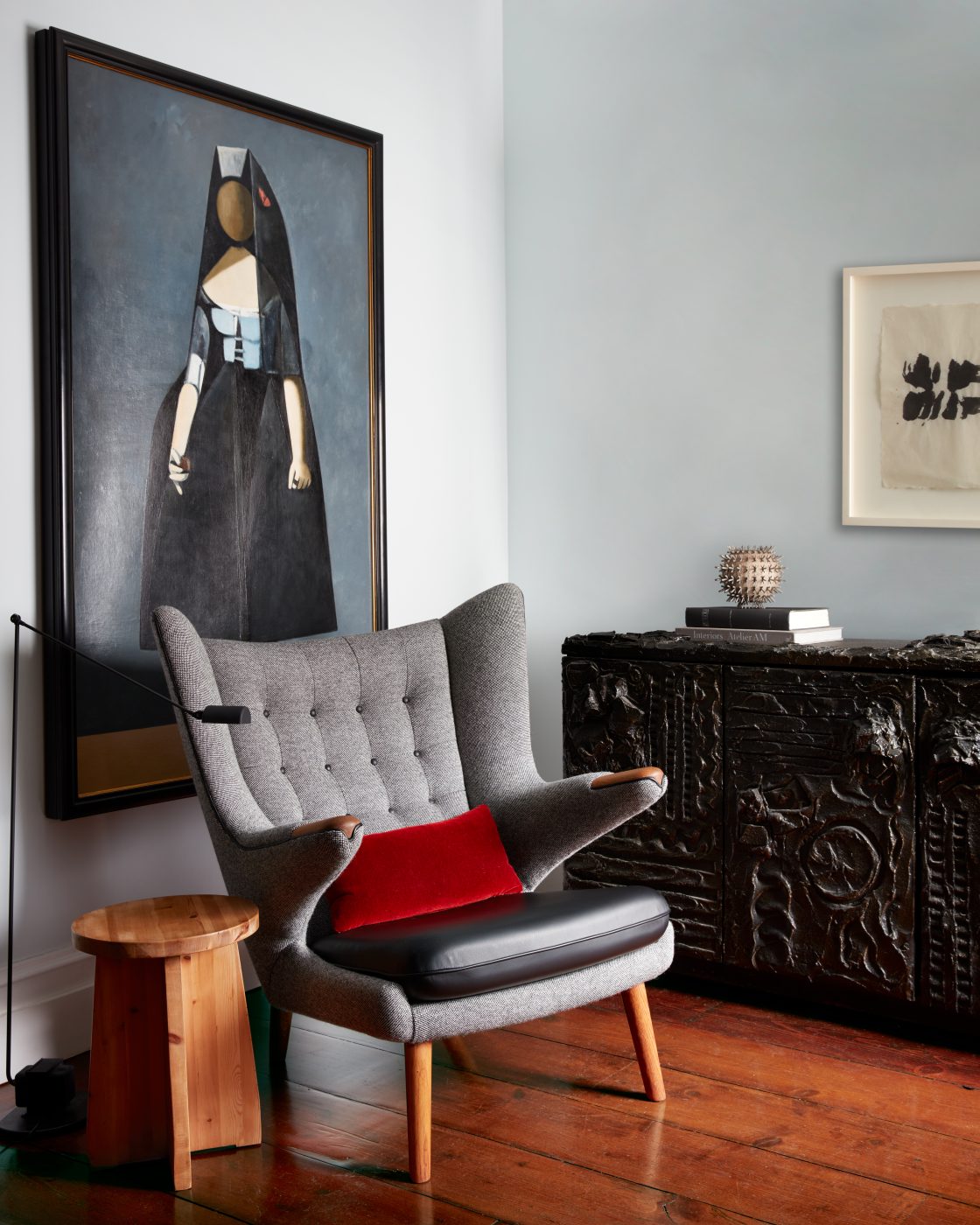
That explain why things are going so well for Rupp, who founded his one-person firm just months before the pandemic.
He is currently working on his first Hamptons house, a rite of passage for New York designers, as well as a Brooklyn duplex for Succession actor Kieran Culkin; Culkin’s wife, Jazz; and their two children. He is also helping iconic New York brand H&H Bagels refresh its image and its stores.
At the same time, he has designed a line of furniture with his friend and mentor Shawn Henderson; the upholstered wood pieces and metal tables are due out this spring.
It was Henderson who introduced Rupp to the Gramercy townhouse owner. Soon after he started working with her, Rupp says, “we dropped the formal process of my sketching and presenting the sketches to her for approval. Instead, it became one continuous dialogue where we bounced ideas off each other.”

The client initially enlisted Rupp to help her update just the house’s living and dining areas, both on the parlor floor.
“I never liked the way that floor looked. It wasn’t cohesive, and the big classical columns interrupting the space didn’t help,” she recalls. “Plus, I had two Persian carpets, and I was sick of them. Mike had the idea to make a single rug for the two rooms. He thought they would flow together, and they do.” To create the desired connection, Rupp commissioned a carved-wool rug from FJ Hakimian.
As for the furniture, almost everything on the parlor floor is from 1stDibs. According to the client, “Some pieces Mike found, and some pieces I found — but I needed his guidance on whether they would go with everything else. If Mike said, ‘No, that won’t work,’ I moved on.”
Rupp notes that the house was designed in the Greek Revival style but gained Arts and Crafts flourishes during a 1914 to 1917 renovation by prominent architect Frederick Sterner. “In the spirit of the Arts and Crafts movement,” he says, “I felt it important to layer in furniture and textiles that showcased real craftsmanship.”

In the living room, these include a Paul Evans coffee table (from Converso Modern), its boxy geometry aligning with that of the rug and contrasting with that of the curvy Viggo Boesen sofa from JENMOD VINTAGE.
A pair of lounge chairs by T.H. Robsjohn-Gibbings flanks a white resin table (from Bernd Goeckler). A Senate chair by Pierre Jeanneret (from MDFG) was placed at an angle to keep the room from taking itself too seriously.
The room’s carved-wood and tile fireplace seemed too busy for the space, says Rupp. “We kept going back and forth on whether to replace it. Eventually, I suggested painting most of it black, which made it just contemporary enough.”
For the top of the mantel, Rupp found a trio of twisted candlesticks at MAISON GERARD; they’re from the ALDUS COLLECTION, created by ACHILLE SALVAGNI and FABIO GNESSI.
In the adjacent dining room, the Edward Wormley for Dunbar chairs set the tone: elegant but not subdued. The client spotted them on the 1stDibs storefront of 20C Design, which also was selling a GEORGE Nakashima dining table with a drop-leaf mechanism that turns it into a desk. She ended up liking the pieces so much she bought them all.
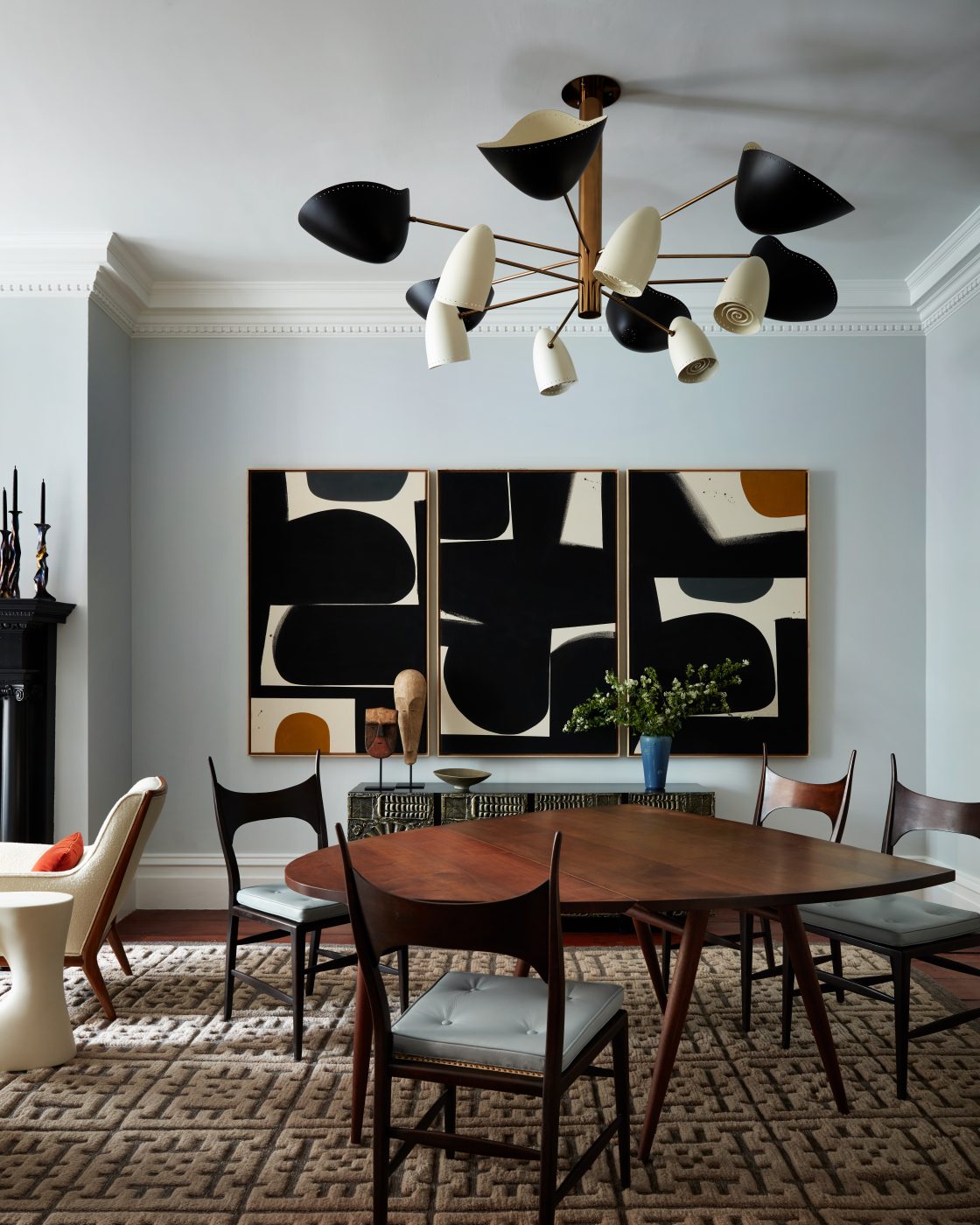
Over the table is a showstopper: a custom Italian fixture from Bernd Goeckler, which replaced a much more traditional chandelier. Rupp gave the chairs leather pads in the same pale blue as the room’s walls.
By the time the parlor floor was done, the owner’s “love of design had blossomed,” Rupp says, so the job kept creeping up the stairs. “Eventually, we touched every room in the house.”
In the primary bedroom, “against the blue-gray walls, we continued with the artisanal feel” established on the parlor level just below, says Rupp. Woven leather-and-reed Moroccan Tuareg mats from Hakimian became a “really cool, intricate” headboard. A lambswool pillow, a pewter lamp, a Scandinavian chair and an African mask complete the textural mix.
The client and her husband held on to their old night tables. “Mike is always willing to keep things if you really love them,” she says. “He finds a way to make them work.”
In the primary bathroom, another Tuareg mat graces the floor, and a second Jeanneret chair holds court. A Jeanneret chair in the bathroom? “This is where the day starts,” explains Rupp. “We wanted to make it feel as important as every other part of the house.”


